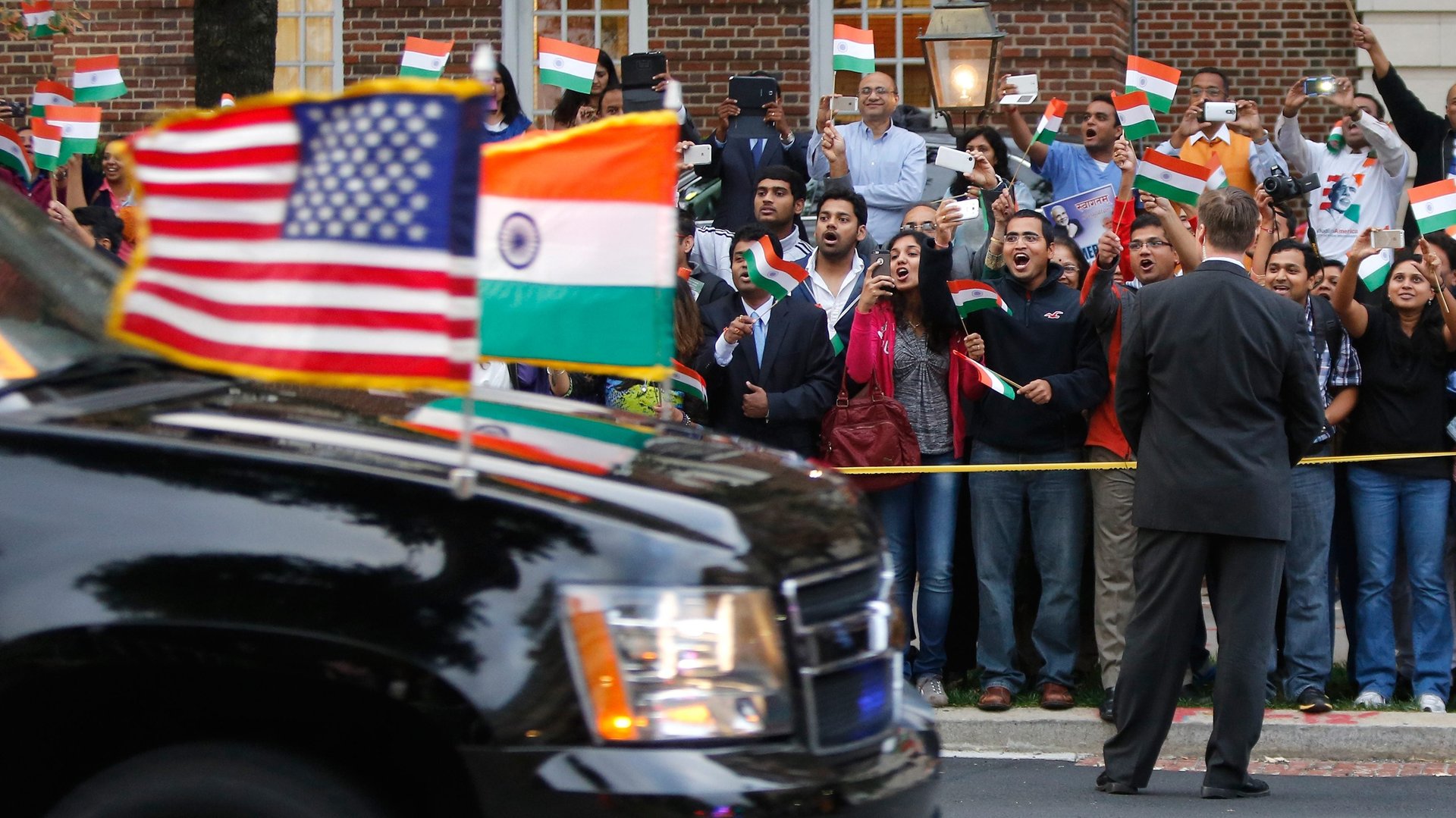The US economy’s recovery from covid helped boost remittances to India
The US emerged as the top source of remittances to India in 2020-21, thanks to its economic resilience during the covid-19 pandemic.


The US emerged as the top source of remittances to India in 2020-21, thanks to its economic resilience during the covid-19 pandemic.
The financial support provided by the US government to its residents during the unprecedented crisis went a long way in tiding over the crisis.
The US government’s monetary support amid covid
In fiscal 2022, India’s total inward remittances stood at $85.6 billion (6.83 lakh crore rupees).
The US accounted for 23% of the overall inflow from abroad, surpassing the United Arab Emirates’ (UAE) 18%, according to a Reserve Bank of India (RBI) research paper (pdf) published on July 16.
During covid-19, the US introduced several wage subsidy schemes like the paycheck protection programme to provide loans to small businesses towards their employees’ salaries. Cash transfers to individuals, too, helped the Indian diaspora support relatives back home in a better way.
“…in the US where most Indians are employed in IT and other white collared jobs, the employment situation for the Indians was more stable during the pandemic restrictions,” Madan Sabnavis, chief economist at Bank of Baroda told The Economic Times newspaper.
Interestingly, smaller remittances under $200 rose to 6% from 2.7% in 2016-17, indicating that low-income households in India were major beneficiaries.
Change in India’s remittance bucket
In fiscal 2022, India’s total inward remittances stood at $85.6 billion (6.83 lakh crore rupees). A depreciation of around 8% in the Indian rupee also increased the value of remittances.
The Gulf region has historically been a strong source of remittances to India, while the US’s share stood at a little over 15%.
This, however, changed in recent years. The Arabian Gulf’s share in remittances to India has shrunk from more than 53% in 2016-17 to less than 29% in 2020-21, the RBI survey showed.
The shift in ranking is a function of the changes in the employment and economic conditions in the host countries, the authors of the research paper have said.
For years, Indians have migrated to the Gulf Cooperation Council (GCC) countries of Saudi Arabia, Kuwait, the UAE, Qatar, Bahrain, and Oman.
Since 2015, though, emigration clearances issued by Gulf countries to unskilled or semi-skilled workers have been on a decline due to slowing growth, sluggish oil prices, and increasingly stringent labour laws.
There has also been a shift in migration to more advanced economies like the US, UK, and Canada, dominated by high-skilled white-collar workers. The augurs well for India’s remittance inflows, according to the RBI survey.